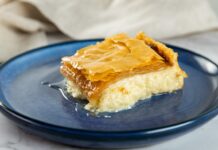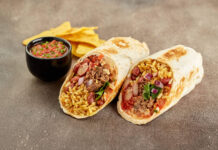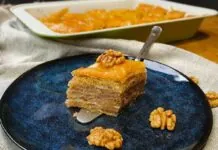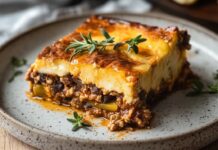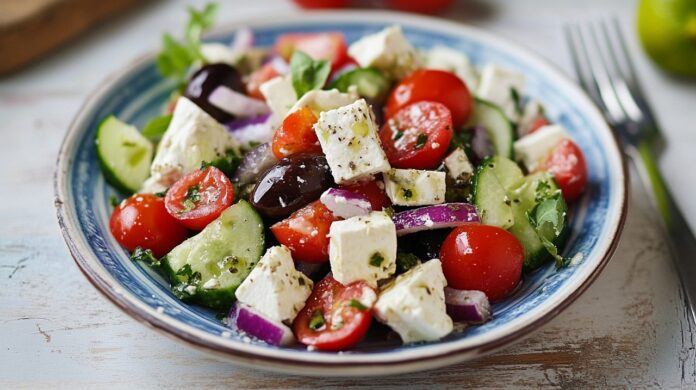
I spent the last summer in Greece. Like most people, I went for the beaches, the sun, the break. It is one of the most popular vacation spots in Europe. I expected the views. I did not expect the food to take over everything. Simple dishes showed up everywhere. That’s why I started exploring Greek recipes.
It reminded me of Brazil, which I have written about before. Seeing the same pattern in Greece made me want to look closer.
So I did. And now I want to show you what I found.
1. Moussaka – Classic Dish That Fills Every Greek Table
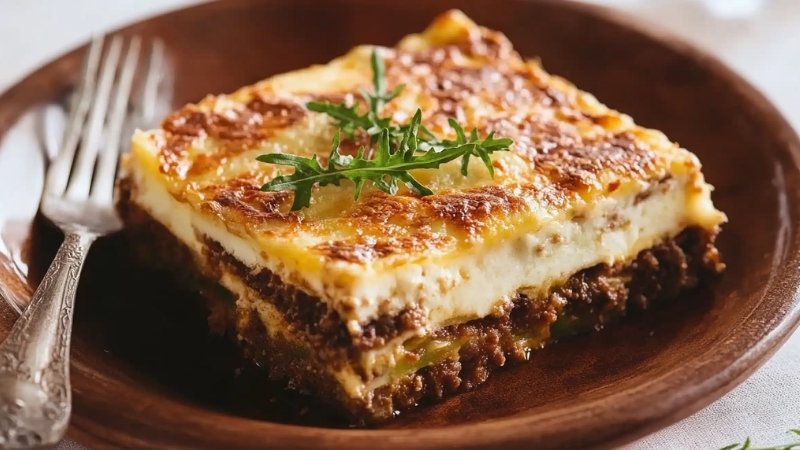
Moussaka is a layered dish made with eggplant, minced meat, and béchamel. It is prepared in large trays and cut into square portions. Most families serve it during weekends or when guests come over.
The recipe changes from house to house. Some add potatoes. Others leave them out. The meat can be heavy with tomato or barely sauced at all.
The structure stays the same. One thick layer of eggplant. A middle layer of meat. A top layer that matters more than anything else.
The Béchamel Is the Key
If the béchamel fails, nobody cares about the rest. It must be thick, smooth, and stay in place after cutting.
That is the first thing people notice. A good top layer covers every flaw under it. That is what sets moussaka apart.
2. Baklava – A Dessert That Never Leaves the Table
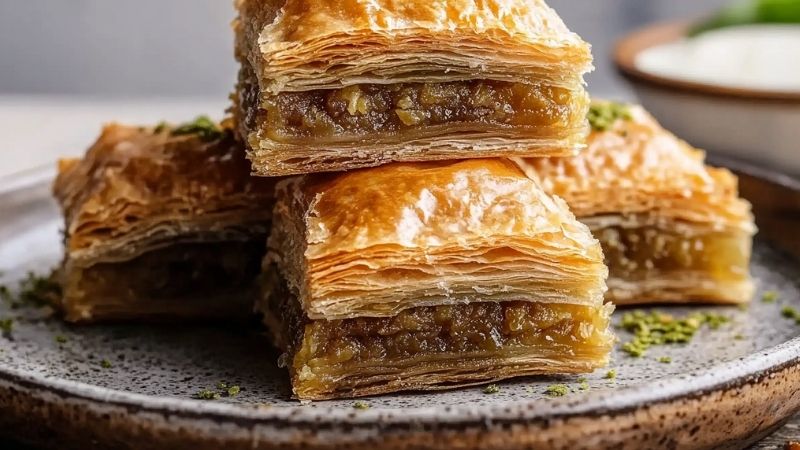
Baklava is made with phyllo dough, crushed walnuts, butter, and syrup. The dough is stacked in thin layers with nuts in between, cut before baking, then soaked in syrup after.
The syrup must be hot if the pastry is cold—or cold if the pastry is hot. That keeps the top crisp and the inside soft. If the balance is wrong, it turns soggy or dry.
It is served at holidays, name days, and large gatherings. Never eaten warm. Always left to rest. Most people let it sit overnight.
Some versions add cinnamon, clove, or citrus peel. Others keep it plain. Shape and size vary, but the method stays the same.
3. Galaktoboureko – Custard Pie with Rules You Do Not Break
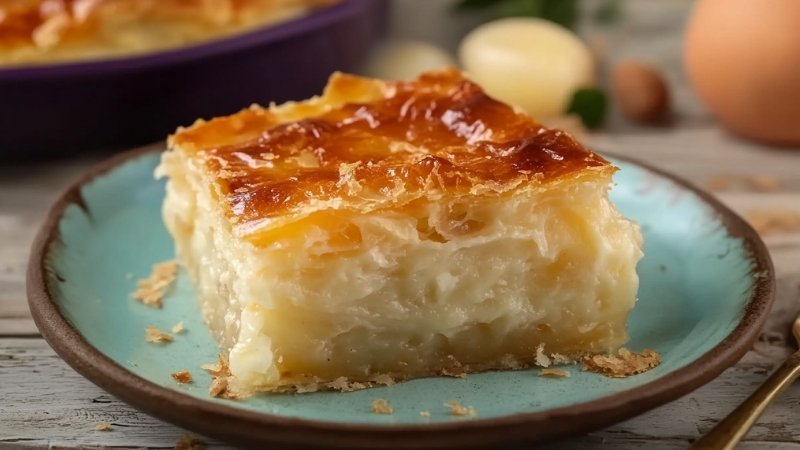
Galaktoboureko is made with layers of phyllo and semolina custard, baked until golden, then soaked in syrup.
The custard stays firm, not soft. The top must stay crisp. It looks similar to baklava, but it is heavier and always served in squares.
The syrup goes on after baking, and the timing has to be exact. If it’s poured too early, the phyllo softens and falls apart. If it’s too late, the custard doesn’t absorb it. Most people let it cool for hours before cutting.
There’s no filling variation. No nuts. No chocolate. No extra spice. Galaktoboureko has a set method and most people follow it exactly.
I like it because the texture always lands right when it’s made well. It doesn’t try to impress. It holds.
The Phyllo-To-Custard Ratio Decides Everything
If the custard is too thick, the bottom turns wet. If there’s too much phyllo, the top cracks and separates.
A typical tray uses around ten sheets on the bottom and another ten on top. Any less and it loses balance.
4. Tsoureki – The One Bread Tied to Easter in Every Greek Home
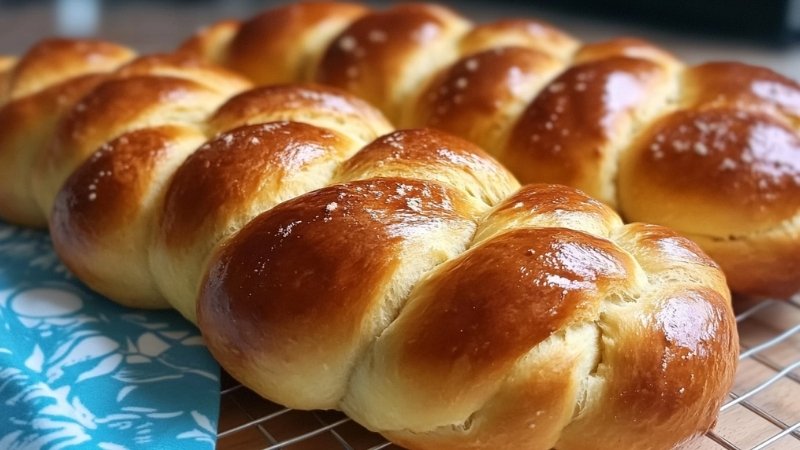
Tsoureki is a soft, sweet bread made with flour, milk, butter, eggs, sugar, mastiha, and mahlepi.
The dough rises for hours and is always braided before baking. When done right, the crust turns golden and the crumb stays dense but soft.
It is made almost always around Easter. Some bake it a few days before. Others do it on Holy Saturday.
Most people prepare it in large batches, at least two or three loaves at a time. The dough is slow and sticky. It needs space, time, and focus.
Every family has a pattern. Some brush it with egg and top it with almonds. Others leave it plain. Red-dyed eggs are pressed into the braid in most cases.
Mastiha and Mahlepi Define the Taste
You cannot swap out these two spices. Mastiha gives tsoureki its faint resin scent. Mahlepi adds a sharp, nutty edge with a hint of fruit.
Without them, the bread loses its identity. Most people only buy these spices once a year—for this one thing.
5. Greek Salad – Always Raw, Always in Season
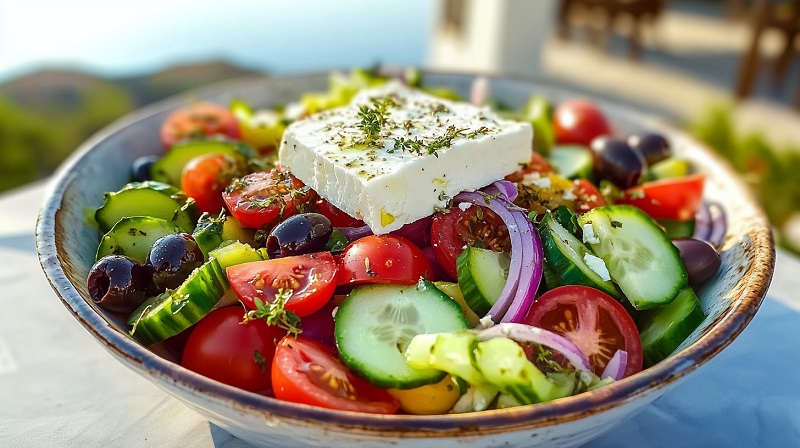
Greek salad is made with tomatoes, cucumber, red onion, olives, green pepper, and a block of feta placed on top.
Olive oil is poured over everything. Sometimes dried oregano. No vinegar. No lettuce. No chopped cheese.
It is served across Greece every day, especially in summer. It appears next to grilled meat, fried fish, or nothing at all.
It is treated as part of the meal, not a starter or side. You eat it with bread, and the juice at the bottom is never wasted.
Some versions include capers or leave out the pepper. But the basics do not change. When tomatoes are out of season, people skip the salad entirely rather than fake it.
Feta Is Served Whole, Not Crumbled
In Greece, feta is never mixed into the salad. It sits on top as a solid block. People break pieces off as they eat. It holds its shape and stays cold.
Crumbling it into the mix would ruin the texture and overwhelm the other ingredients.
6. Dolmathakia – Wrapped by Hand, Made in Batches
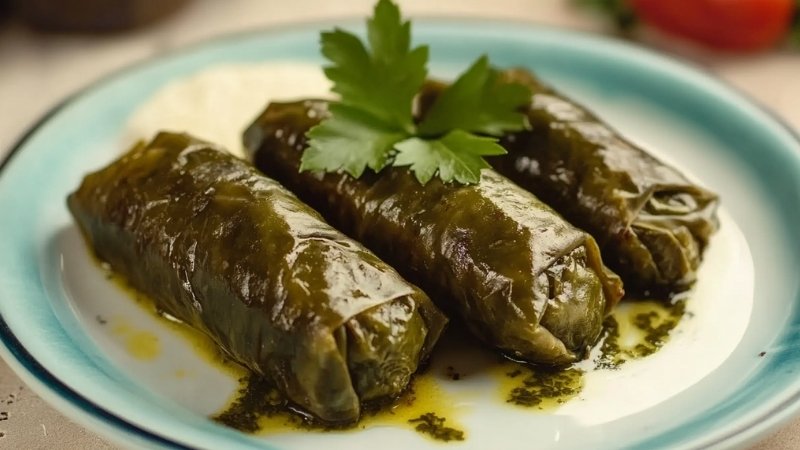
Dolmathakia are grape leaves filled with rice, herbs, and olive oil. They are rolled into small, tight pieces and cooked slowly.
Some versions include meat, but the most common ones are vegetarian and served cold with lemon.
People do not make a few. They make dozens. One tray is never enough. They are packed close together, cooked in layers, and usually served at room temperature. They’re usually eaten with bread and yogurt.
The flavor depends on the herbs—usually dill, parsley, and mint. The rice must be soft but not wet. If they fall apart, they’re tossed.
7. Spanakopita – The Pie That Never Sits Long
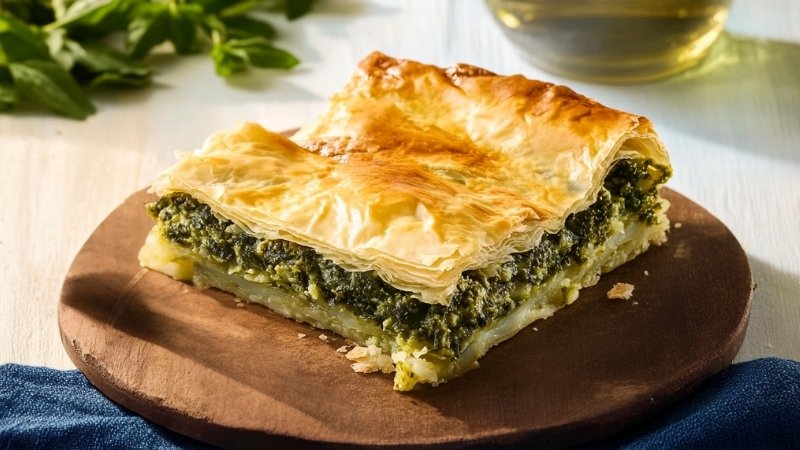
Spanakopita is a layered phyllo pie filled with spinach, feta, herbs, and olive oil. The filling must be dry. The top must be crisp. It holds its shape when sliced and always cracks at the edges.
It’s made in large trays and cut into squares or triangles. Some people prepare smaller hand pies, but the tray version is more common.
It works as a meal, a snack, or something to carry. No sides are needed. You grab a piece and eat.
The filling usually includes dill, parsley, and green onions. Some add leeks. Garlic is rare. If there’s too much feta, it turns salty. If there’s too little, it tastes flat. The balance is always the key.
8. Pastitsio – Pasta, Meat, and Béchamel
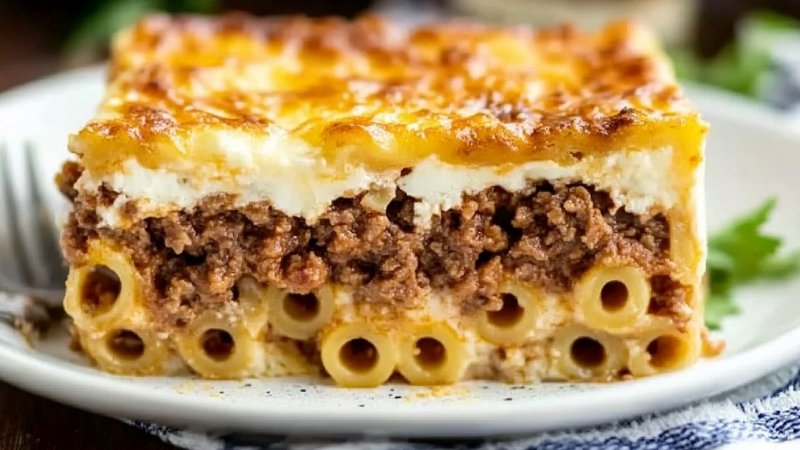
Pastitsio is built in three layers. First comes the pasta—long, hollow noodles, usually kofto makaronia. These are boiled and laid down in straight rows. That structure matters. If the base shifts, the slice falls apart later.
The meat layer goes on next. Minced beef or lamb, cooked with onion, tomato paste, cinnamon, black pepper, and a little clove or allspice. Not runny. Not dry. Just enough to stay firm between layers.
Then comes the top. A thick béchamel made with butter, flour, milk, and egg. Poured last, spread evenly, and baked until the top turns deep gold. The result cuts clean and stays intact, even the next day.
Pastitsio shows up at Sunday lunches, school canteens, and every holiday table that needs something filling.
9. Domates Yemistes – Tomatoes Filled with Rice and Left to Rest
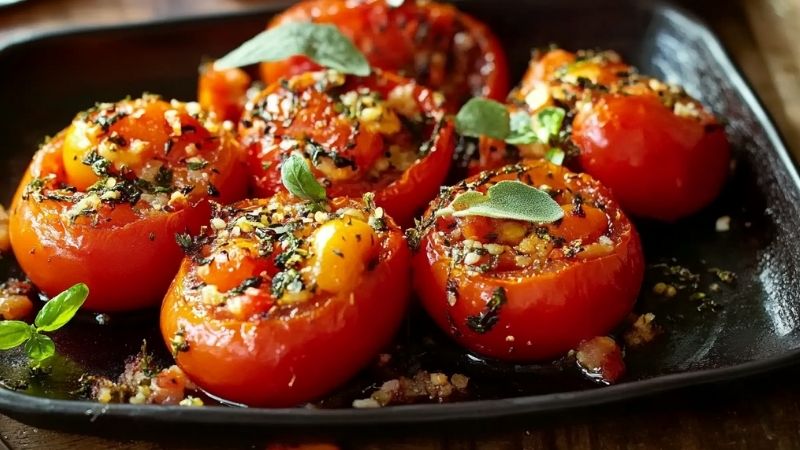
Domates yemistes are tomatoes hollowed out and stuffed with rice, herbs, and olive oil. They are baked slowly until the tops collapse and the skin wrinkles. The filling must be soft but hold shape. The tomato must stay whole.
The rice is mixed with onion, parsley, dill, mint, and sometimes pine nuts or raisins. A few versions include minced meat, but the most common ones are vegetarian.
The stuffed tomatoes are placed in a tray with potatoes and baked together so everything absorbs the same flavor.
The dish is served warm or cold. Never rushed. Most people cook it early in the day and leave it on the counter. It’s better after a few hours.
10. Gyros – Most Popular Street Food, Served Everywhere
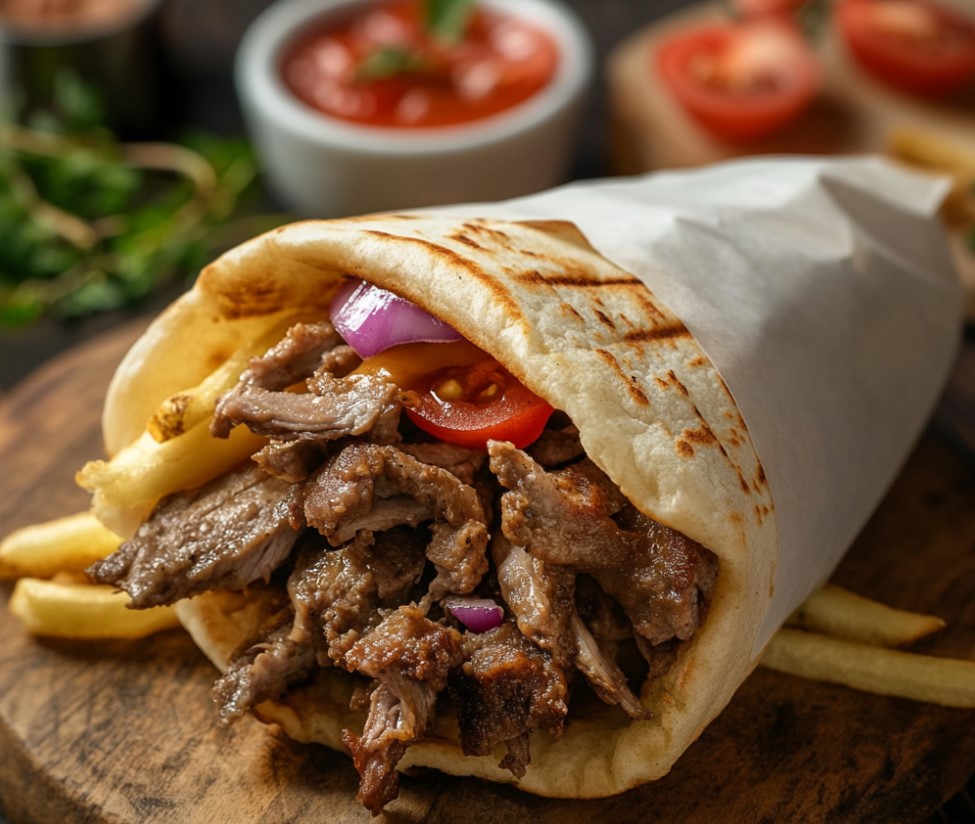
Gyros is what you grab when you’re in Greece and need something satisfying in minutes. It’s juicy meat(usually pork or chicken)cooked on a rotisserie and wrapped in warm, soft pita. Add a handful of fresh tomato, onion, and a generous scoop of tzatziki, and you’ve got the perfect bite.
You can find gyros almost anywhere. It’s on every street corner, in food trucks, and tucked into small shops. It’s the kind of food that’s simple but always hits the spot.
What makes it great? It’s not complicated. Gyros is built to be enjoyed anywhere—no table, no cutlery needed. It’s food that doesn’t try to be fancy, and that’s what makes it so good.
The Seasoning Makes It Stand Out
It’s the seasoning that brings gyros to life. A mix of oregano, garlic, and thyme gives the meat depth and keeps it juicy.
Without that balance, it wouldn’t have that distinctive flavor that makes you crave it again and again.
And Let’s Not Forget Tzatziki – Cold Yogurt That Balances Everything Else
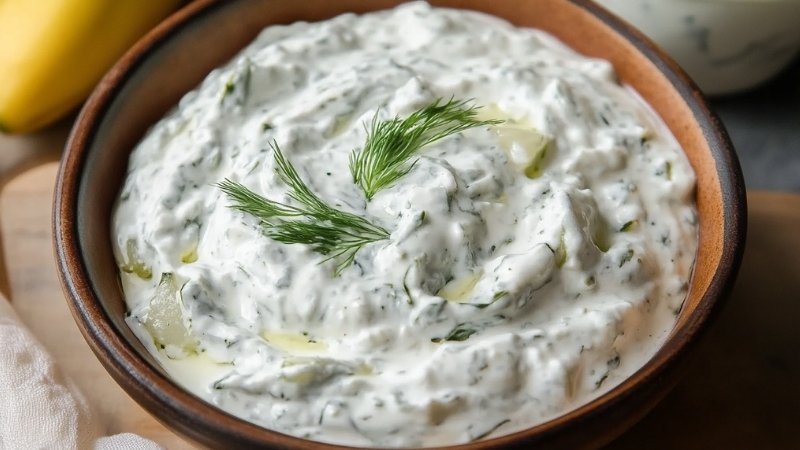
Tzatziki is made with strained yogurt, grated cucumber, raw garlic, olive oil, and lemon juice or vinegar. The cucumber must be peeled, salted, and fully drained. If any water stays, the texture turns loose and thin.
The garlic is always raw. It gives tzatziki its sharpness. Dill is optional, and most people use very little salt. The balance is what matters—bright, thick, and cold.
The yogurt must be full-fat and firm. Anything low-fat or watery ruins the result.
It’s always served cold and in small amounts. It stays off to the side. It’s not the main dish, but it’s never missing either.
Tzatziki is used in place of heavy sauces or dressings. It does not smother the food. It sharpens and cools it. You’ll see it:
- Inside gyros and souvlaki wraps
- On the side of grilled lamb or chicken
- With fried zucchini or eggplant
- Next to keftedes (meat patties)
- As a spread in cold sandwiches
- Alongside fries or flatbread
FAQs
Is Greek food similar to Brazilian food?
The flavors are different, but the structure is familiar. Both rely on home cooking, shared meals, and simple ingredients. In both countries, food is about presence. Large trays, rice dishes, stews, and breads that show up at the center of the table. No overcomplication. Just food that does the job and does it well.
What does Greek food have in common with Mexican food?
Greek and Mexican food use entirely different ingredients, but the roles are similar. Both use sharp sauces like tzatziki or salsa to cut through heavy meat. Bread and tortillas serve as tools. Lemon and lime appear everywhere. And both cuisines use herbs and acid to brighten up rich food without masking it.
What do Greeks usually eat for breakfast?
Most people keep it light. Bread with cheese or jam, olives, a boiled egg, or plain yogurt with honey. In some areas, they serve small cheese pies or pastries early in the morning. Coffee is constant. Nobody builds a full plate. Breakfast is short and quiet.
Are there any Greek soups worth trying?
Yes. Avgolemono is the most well-known. It’s made with chicken broth, rice or orzo, and thickened with egg and lemon. It’s smooth, warm, and sharp. Others include fasolada (bean soup) and magiritsa (served after Easter midnight service). Greek soups are often simple but full of structure.
What kind of desserts are eaten besides baklava and galaktoboureko?
Loukoumades are fried dough balls soaked in syrup or honey. Kourabiedes are almond cookies dusted in powdered sugar. Melomakarona are soft cookies with honey and walnuts, mostly made during Christmas. Greek desserts rely heavily on syrup, nuts, and baking—not creams or chocolate.
Final Thoughts
Greek food is built on tradition, not trends. Every dish here has stood the test of time because it delivers exactly what it promises. Simple, honest flavors, made to be shared with those who matter most.



